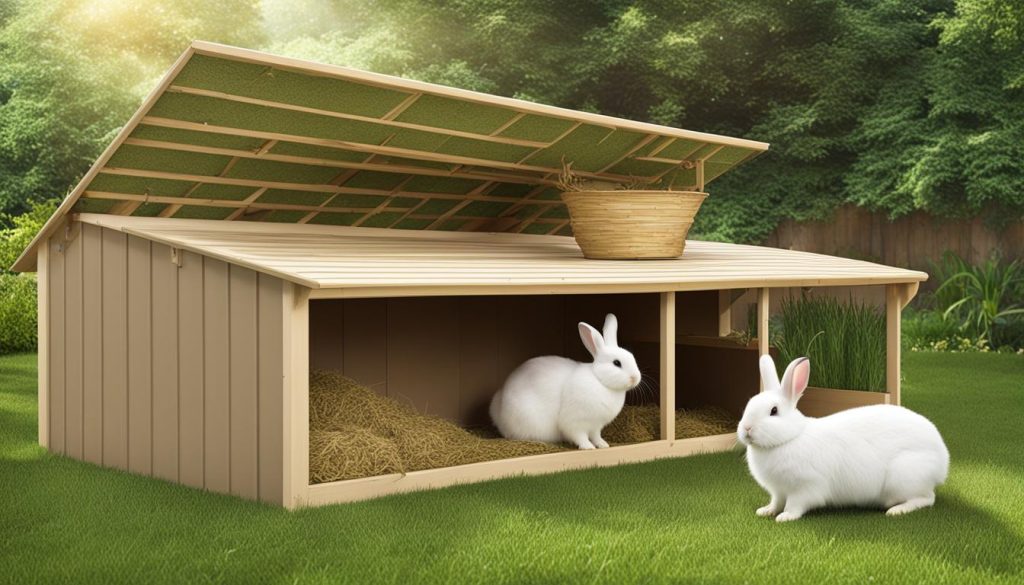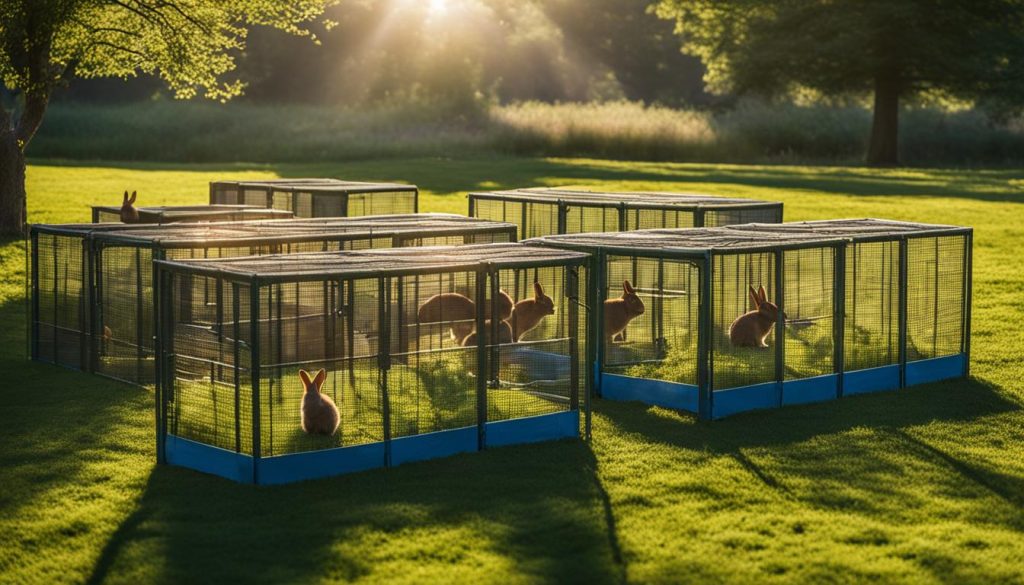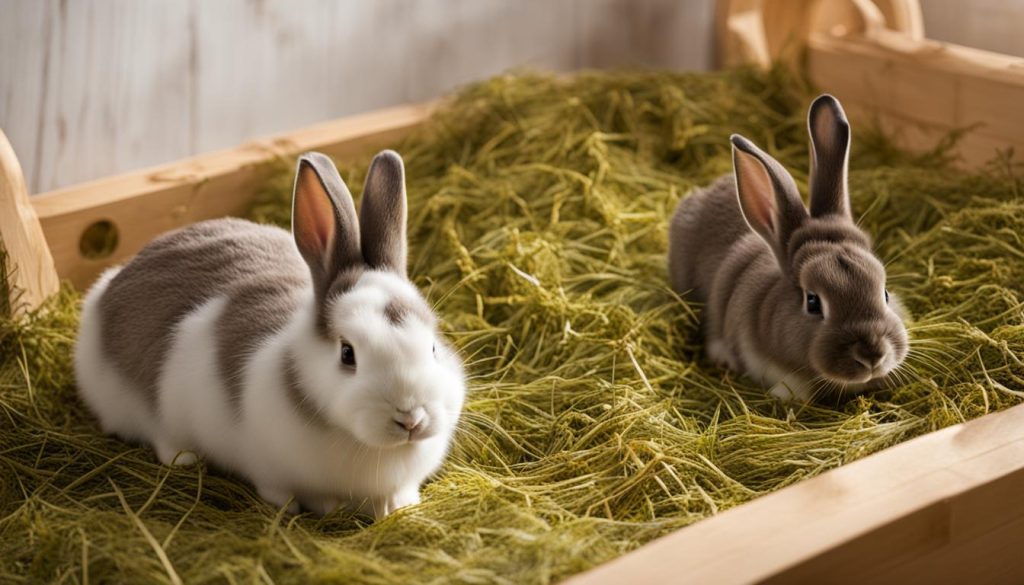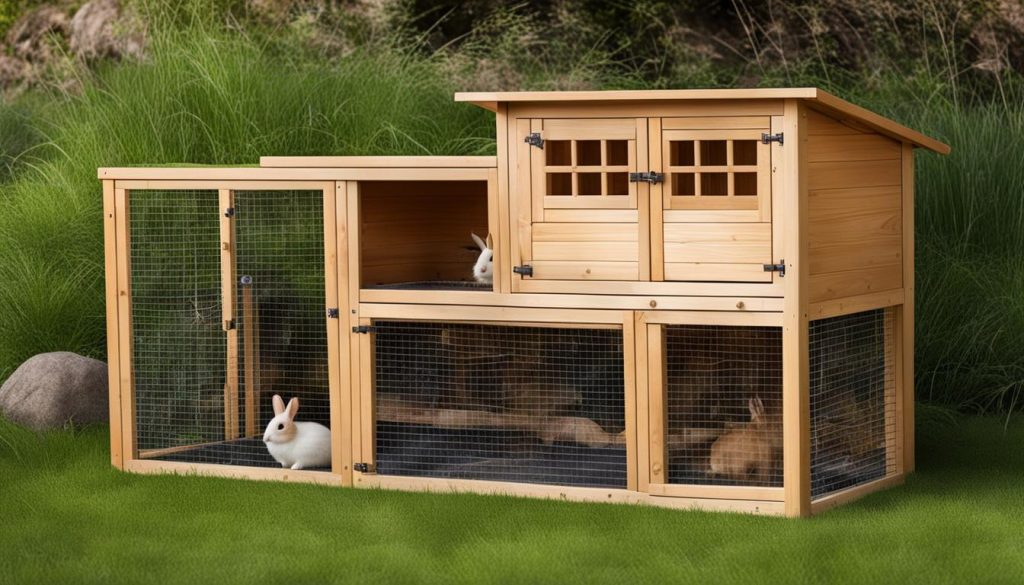
The Perfect Sheds for Housing Your Bunnies Safely
When considering getting rabbits as pets, it’s crucial to think about their living space and ensure they have enough room to be happy and healthy. Rabbits thrive when they have access to a large area for jumping, stretching, digging, and running. For two average-sized rabbits, the minimum recommended living space is three metres by two metres, with a height of at least one metre. Additionally, they require a sheltered area like a hutch, which should be at least six feet by two feet by two feet. Larger breeds or more than two rabbits will require even more spacious accommodations. Providing ample space helps prevent boredom, depression, and potential health issues.
SEO relevant keywords: Rabbit Sheds, Rabbit Hutches, Outdoor Rabbit Housing, Rabbit Accommodation
Outdoor Housing Options for Rabbits
When it comes to housing rabbits outdoors, there are several options to consider. One popular choice is a large hutch attached to a spacious outdoor rabbit run. This setup allows rabbits to have constant access to a larger area while also providing them with a sheltered space to retreat to. Another option is to use a shed or a large children’s playhouse connected to a run. This not only offers additional height but also provides more protection from the elements. Aviaries, typically designed for birds, can also serve as suitable outdoor enclosures for rabbits when equipped with a shelter attachment. Regardless of the chosen housing option, it is crucial to ensure that it is predator-proof and escape-resistant while also providing proper flooring to prevent digging.
When setting up outdoor housing for rabbits, it is important to consider their safety and well-being. Predators can pose a threat, so using robust materials, such as heavy-gauge welded mesh, is essential to prevent them from entering the enclosure. Chicken wire should be avoided as it can be easily chewed through or penetrated. Additionally, the wire should have a thickness of at least 16 gauge (1.2 mm) with smaller holes measuring around 13mm to keep out smaller predators. Properly securing the mesh to the wooden frame ensures durability. It’s also recommended to add a kickboard at the bottom of the run’s door to prevent rabbits from rushing out when the door is opened. To further enhance the protection, burying the wire under the ground or using a solid flooring material like paving stones can prevent both escape and predator intrusion.
Overall, outdoor housing options provide rabbits with the opportunity to enjoy fresh air and natural surroundings while still keeping them safe and secure. By selecting the right setup and taking necessary precautions, rabbits can thrive in outdoor environments that meet their needs for space, shelter, and protection.
Pros and Cons of Outdoor Rabbit Housing
| Pros | Cons |
|---|---|
| Provides rabbits with access to fresh air and natural surroundings | Exposes rabbits to potential predators |
| Allows rabbits to engage in natural behaviors like digging and running | Requires extra precautions to ensure predator-proofing and escape prevention |
| Offers a larger living space compared to indoor housing | May be more challenging to maintain and clean |
| Can provide more opportunities for mental stimulation and exercise | Requires proper protection from extreme weather conditions |
While outdoor housing offers benefits in terms of space and natural environment, it is crucial to consider the challenges it presents. Adequate protection from predators and extreme weather conditions must be ensured. Additionally, maintaining cleanliness and providing ongoing care can require extra effort. By carefully weighing the pros and cons and implementing appropriate measures, outdoor housing can be a great choice for ensuring the well-being and happiness of pet rabbits.
Converting Sheds for Rabbit Housing
Converting sheds into rabbit housing is a fantastic option for creating a spacious and secure enclosure for your furry friends. Before starting the shed conversion project, it is crucial to ensure that the shed is structurally sound, without any gaps, holes, or rotting wood. Placing the shed on a hard-standing surface or installing a solid floor can prevent rabbits from digging out or predators from digging in. Adding suitable locks to the shed doors enhances security, ensuring that your rabbits are safe from any potential threats. Ventilation is also a critical consideration, as wooden sheds can become hot during the summer months. To address this, installing small gauge welded mesh on windows and creating wooden-framed inner mesh doors allow for proper airflow while effectively keeping your rabbits safe and secure.
Furthermore, lining the walls of the shed with insulation and protective materials such as plywood and lino can provide added comfort and prevent chewing. Insulation helps regulate the temperature inside the shed, ensuring that your rabbits are cozy in the colder months and comfortable during warmer weather. Additionally, using protective materials on the walls helps prevent rabbits from damaging the structure through chewing or scratching. By creating a well-insulated and chew-resistant environment, you can ensure that your shed conversion provides a safe and comfortable living space for your rabbits.
Converting sheds for rabbit housing is a versatile solution that offers ample space and protection for your furry friends. By following the necessary steps to make the shed secure and comfortable, you can create a perfect home for your rabbits. Whether you choose to convert a small shed or a larger one, the key is to prioritize the overall safety, ventilation, and insulation of the space. With a well-designed shed conversion, your rabbits will have the ideal space to thrive and enjoy their new home.
| Benefits of Converting Sheds for Rabbit Housing | Considerations for Shed Conversions |
|---|---|
| 1. Provides ample space for rabbits to move, play, and explore. | 1. Ensure the shed is structurally sound and free from gaps, holes, or rotting wood. |
| 2. Offers a secure and protected environment for rabbits. | 2. Place the shed on a hard-standing surface or install a solid floor to prevent digging. |
| 3. Easy to customize and adapt the shed to meet rabbits’ specific needs. | 3. Install suitable locks on shed doors to enhance security. |
| 4. Provides insulation to regulate temperature and keep rabbits comfortable. | 4. Ensure proper ventilation by installing small gauge welded mesh on windows and creating inner mesh doors. |
| 5. Prevents rabbits from damaging the structure through chewing or scratching. | 5. Line the shed walls with insulation and protective materials like plywood and lino. |
Creating a Safe and Secure Rabbit Run
When it comes to providing outdoor housing for rabbits, a safe and secure run is essential. This ensures that your rabbits can enjoy the outdoors while being protected from predators and preventing any chances of escape. To create a safe and secure rabbit run, there are a few important considerations to keep in mind.
Firstly, the materials used for the rabbit run should be robust and predator-proof. Heavy-gauge welded mesh is recommended, as it is sturdy and difficult for predators to break through. Avoid using chicken wire, as it can be easily chewed through or penetrated by determined predators. Additionally, the thickness of the wire should be a minimum of 16 gauge (1.2 mm), with smaller holes measuring around 13mm to keep out smaller predators like stoats and weasels.
Properly securing the mesh to the wooden frame is essential for durability. Strong staples should be used to ensure that the mesh remains in place and cannot be easily dislodged. Adding a kickboard at the bottom of the run’s door is also recommended to prevent rabbits from rushing out when the door is opened.
For extra protection, consider burying the wire under the ground or using a solid flooring material like paving stones. This prevents both escape and predator intrusion, giving you peace of mind knowing that your rabbits are safe and secure in their outdoor environment.

Comparison of Materials for Rabbit Run Construction
| Material | Pros | Cons |
|---|---|---|
| Heavy-gauge welded mesh | Sturdy, predator-proof | Can be expensive |
| Chicken wire | Cost-effective | Easily chewed through by predators |
| Paving stones | Prevents both escape and predator intrusion | May require additional effort for installation |
Indoor Housing Considerations for Rabbits
When it comes to housing rabbits indoors, there are a few key considerations to keep in mind to ensure their safety and well-being. Providing a minimum area of 3m x 2m x 1m allows rabbits to have enough space to move around comfortably. Creating a designated room or using tall puppy panels to section off an area of a room can provide a safe indoor space for rabbits to thrive in.

Rabbit-proofing the indoor environment is crucial to prevent any potential hazards. It’s important to cover cables and wires to avoid chewing accidents and remove any poisonous houseplants that may be within reach. Additionally, securing cleaning products, medications, and keeping rabbits separated from other potentially harmful pets in the household is essential.
Choosing the right bedding materials is also important for indoor rabbits. Clean straw or natural paper bedding can provide comfort and cleanliness, while sawdust should be avoided as it can be dusty and cause respiratory problems for rabbits.
Key Considerations for Indoor Housing:
- Provide a minimum area of 3m x 2m x 1m for rabbits to move around comfortably
- Rabbit-proof the indoor environment to prevent hazards
- Use appropriate bedding materials such as clean straw or natural paper bedding
“Creating a safe and secure indoor environment for rabbits is essential to their overall well-being and happiness.”
By considering these factors and taking the necessary precautions, you can create a safe and comfortable indoor living space for your rabbits. Just like outdoor housing, indoor accommodations should prioritize the rabbits’ physical and mental health, ensuring they have ample space to move and play while keeping them protected from potential dangers.
| Key Considerations | Benefits |
|---|---|
| Providing a minimum area of 3m x 2m x 1m | Allows rabbits to move around comfortably |
| Rabbit-proofing the indoor environment | Prevents potential hazards and accidents |
| Using appropriate bedding materials | Ensures comfort and cleanliness |
Essential Considerations for Rabbit Accommodation
When it comes to providing the perfect living space for your rabbits, there are several important factors to consider. Ensuring their safety, comfort, and overall wellbeing is crucial. Here are some essential considerations for rabbit accommodation:
1. Shelter Protection
Rabbits need appropriate shelter to protect them from the elements and potential predators. When setting up outdoor housing, make sure it is predator-proof with robust locks and secure mesh. Additionally, consider the materials used for the housing to ensure they are durable and weather-resistant. Insulating sheds and lining walls with plywood and lino can provide extra protection and comfort, while preventing rabbits from chewing on the walls.
2. Ventilation for Good Health
Proper ventilation is essential to prevent respiratory illnesses in rabbits. Ensure that their housing setups, whether indoor or outdoor, have adequate airflow. This can be achieved by including windows and mesh doors. It’s important to strike a balance between ventilation and protection, so make sure the mesh used is small enough to keep predators out while allowing fresh air to circulate.
3. Flooring and Cleanliness
The flooring of rabbit accommodation should be easy to clean and maintain. Opt for solid surfaces like lino or paving stones, as they are urine-resistant and prevent rabbits from digging out. Avoid using sawdust, as it can be dusty and lead to respiratory issues. Regularly clean and replace bedding materials to ensure cleanliness and hygiene for your rabbits.
4. Connecting Runs and Enclosures
Providing rabbits with additional outdoor play areas and connecting runs and enclosures to their housing creates a more enriching environment. This allows them to exercise, explore, and exhibit natural behaviors. Ensure that all connections between these areas are secure and escape-proof to prevent any accidents or potential dangers.
By considering these essential factors when planning and setting up rabbit accommodation, you can provide a safe, comfortable, and stimulating environment for your furry friends.

| Accommodation Factors | Considerations |
|---|---|
| Shelter Protection | Use secure mesh and locks to keep predators out. Insulate sheds and line walls with plywood and lino to provide added protection. |
| Ventilation | Ensure adequate airflow by incorporating windows and mesh doors into housing setups. |
| Flooring and Cleanliness | Choose easy-to-clean surfaces like lino or paving stones. Avoid sawdust and regularly replace bedding materials. |
| Connecting Runs and Enclosures | Create additional play areas and connect runs for exercise and enrichment. Ensure all connections are secure and escape-proof. |
Conclusion
After exploring various housing options for rabbits, it is clear that providing suitable accommodation is essential for their overall well-being. Whether you choose outdoor housing, such as a hutch and run setup or a converted shed, or prefer indoor accommodations, careful consideration of their needs is crucial.
Outdoor housing options like rabbit sheds and runs offer rabbits the space to exercise, while providing a sheltered area for them to feel secure. It is important to ensure that these outdoor enclosures are predator-proof and escape-resistant to keep your rabbits safe.
On the other hand, indoor housing can be a great option for rabbits when given ample space and proper rabbit-proofing. Creating a dedicated area within your home using tall puppy panels or sectioning off a room can allow them to roam freely while keeping them safe from potential dangers.
Regardless of the type of accommodation you choose, always remember to prioritize ventilation, cleanliness, and comfort. Consider the materials used, the flooring, and the bedding to provide a suitable environment that promotes your rabbits’ physical and mental well-being.
By following these guidelines and tailoring the accommodation to meet their specific needs, you can create the perfect home for your furry friends. Whether outdoor in a spacious run or indoors in a rabbit-proof area, ensuring their happiness and health should be your ultimate goal.